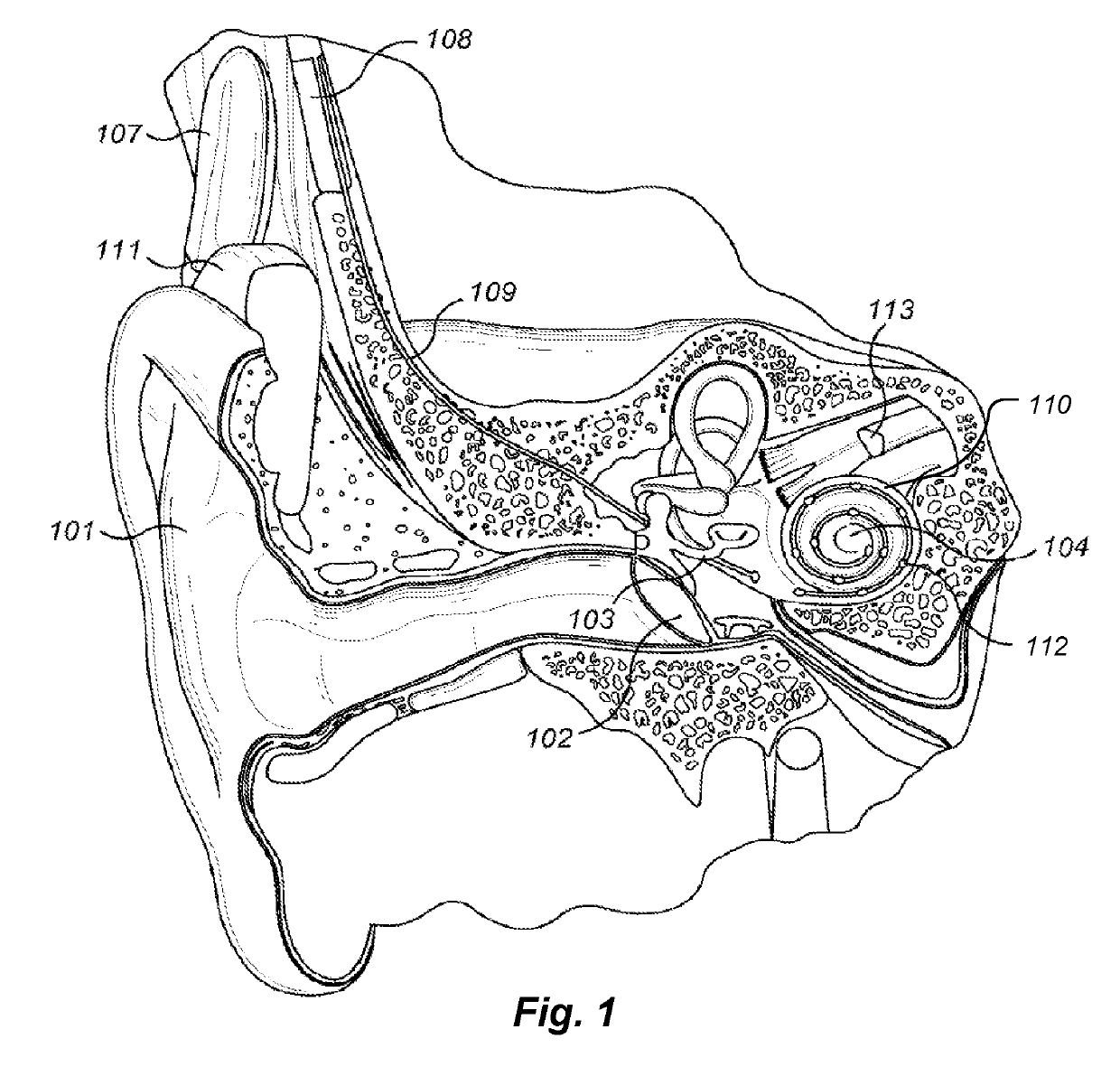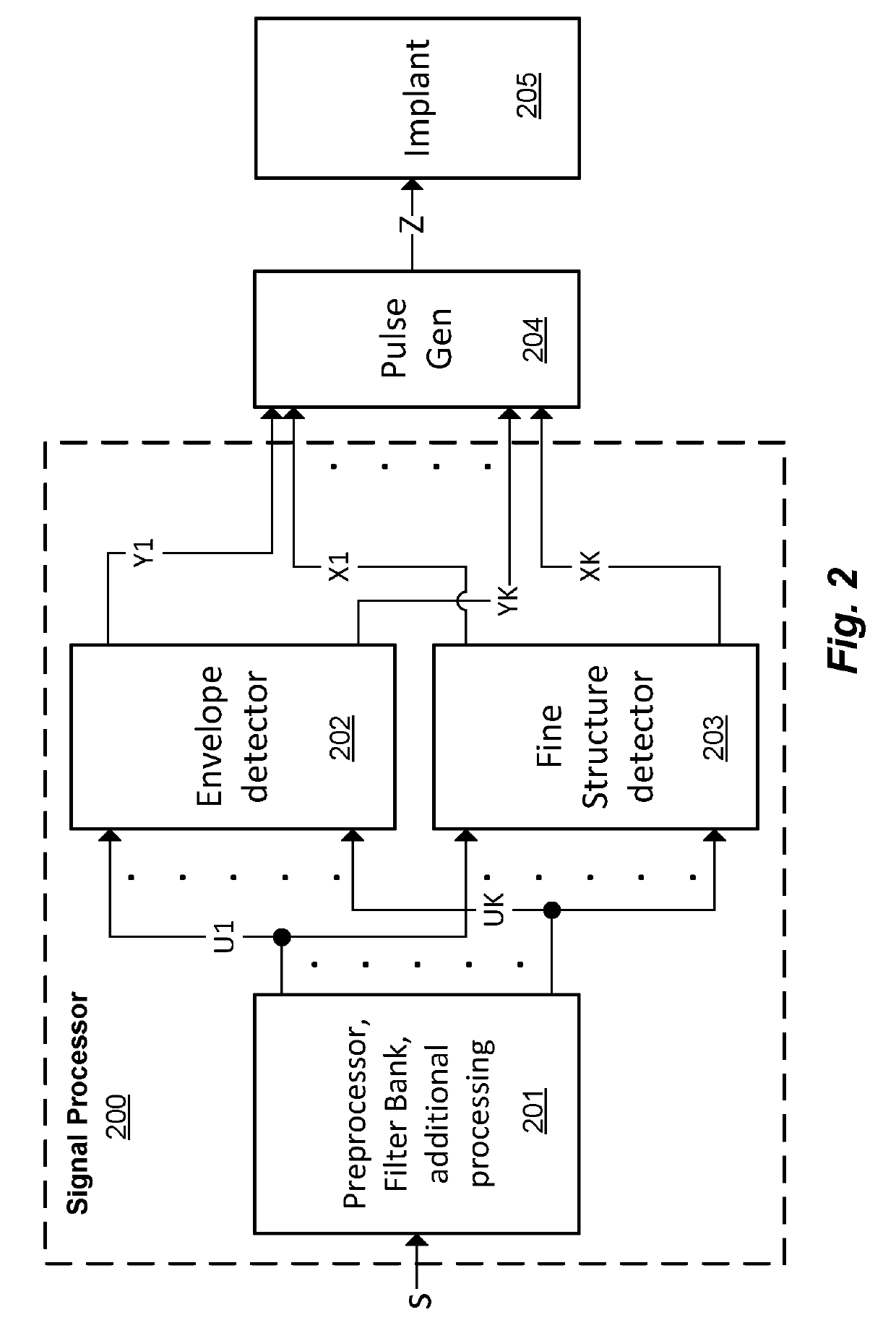Reproducible placement of ABI Electrodes
a technology of abi electrodes and electrodes, which is applied in the field of hearing implant systems, can solve the problems of losing the ability to transmit action potentials elicited in the cochlea to the brainstem, requiring much more effort and time (longer surgery) and suffering from shortcomings
- Summary
- Abstract
- Description
- Claims
- Application Information
AI Technical Summary
Benefits of technology
Problems solved by technology
Method used
Image
Examples
Embodiment Construction
[0035]Embodiments of the present invention determine an optimized placement location for an ABI electrode array by using both the afferent nerve fibers that forward elicited action potentials in the cochlea to the auditory brainstem, and the efferent nerve fibers that forward nerve signals from the brain stem to the cochlea. This approach for the first time allows the determination of an optimal placement location for an ABI electrode array by taking advantage of purely objective frequency resolved measurements (EABR is not frequency resolved).
[0036]FIGS. 6A-6B show various logical steps in providing an optimal, placement location for an ABI electrode array according to an embodiment of the present invention. Embodiments of the invention may be implemented in part in any conventional computer programming language. For example, preferred embodiments may be implemented in a procedural programming language (e.g., “C”) or an object oriented programming language (e.g., “C++”, Python). A ...
PUM
 Login to View More
Login to View More Abstract
Description
Claims
Application Information
 Login to View More
Login to View More - R&D
- Intellectual Property
- Life Sciences
- Materials
- Tech Scout
- Unparalleled Data Quality
- Higher Quality Content
- 60% Fewer Hallucinations
Browse by: Latest US Patents, China's latest patents, Technical Efficacy Thesaurus, Application Domain, Technology Topic, Popular Technical Reports.
© 2025 PatSnap. All rights reserved.Legal|Privacy policy|Modern Slavery Act Transparency Statement|Sitemap|About US| Contact US: help@patsnap.com



